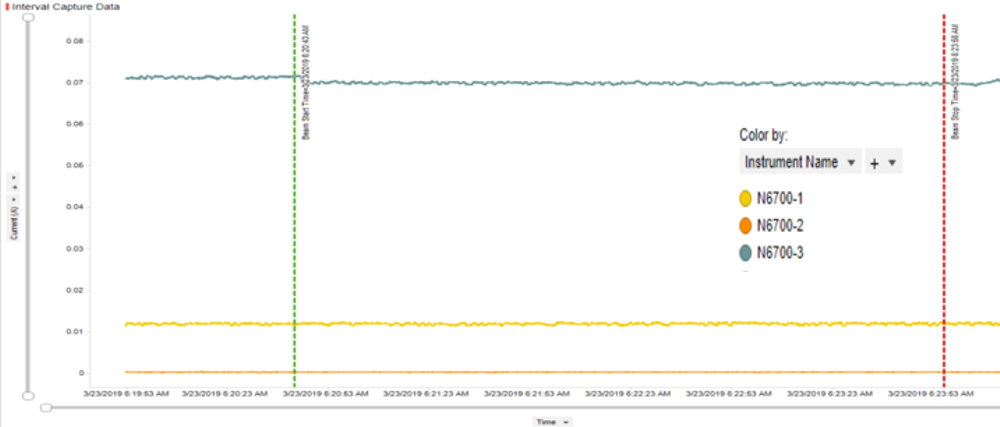SPNA249 june 2023 TMS570LC4357-SEP
5 SEL Results
During SEL characterization, the device was heated using forced hot air, maintaining the IC temperature at 125°C. The temperature was monitored by means of a K-type thermocouple attached as close to the IC as possible. The species used for the SEL testing was a silver (47Ag) ion with an angle-of-incidence of 0° for an LETeff = 48 MeV-cm2/mg. The kinetic energy in the vacuum for this ion is 1.634 GeV (15-MeV/amu line). A flux of approximately 105 ions/cm2-s and a fluence of approximately 107 ions/cm2 were used for {two} runs. The supply voltages are supplied externally at the recommended maximum voltage setting noted in Table 3-1. Run duration to achieve this fluence was approximately {2} minutes.
| #Runs | Distance (mm) | Temperature (°C) | Ion | Angle | Flux (ions.cm2/mg) | Fluence (#ions/cm2) | LETeff (MeV.cm2/mg) |
|---|---|---|---|---|---|---|---|
| {2} | 40 | 125 | 47Ag | 0° | 1.00E+05 | 1.00E+07 | 48 |
Figure 5-1 shows plots of the power supply current over time. No SEL events were observed for any of the runs.
 Figure 5-1 TMS570LC4357-SEP SEL Plot of
all Three Power Supplies, 47Ag With 0° Angle, LETeff =
48MeV
Figure 5-1 TMS570LC4357-SEP SEL Plot of
all Three Power Supplies, 47Ag With 0° Angle, LETeff =
48MeV| Supply | Bias |
|---|---|
| VCCAD | 5.25 V |
| VCCIO | 3.6 V |
| VCC(core) | 1.32 V |
No significant increases in current consistent with a latch-up event were detected Pre and Post Beam.